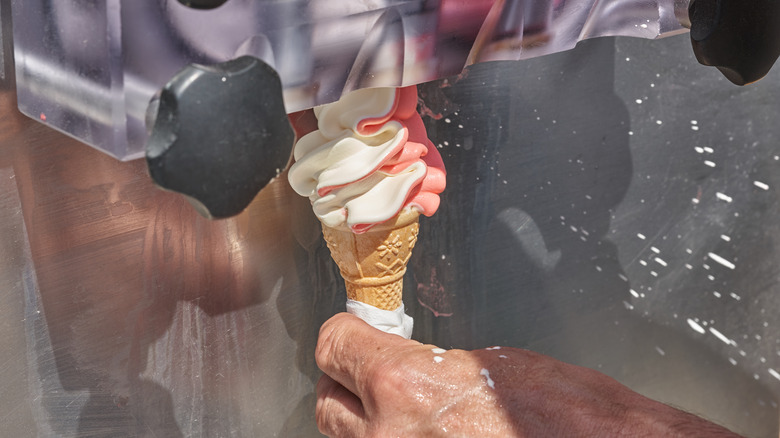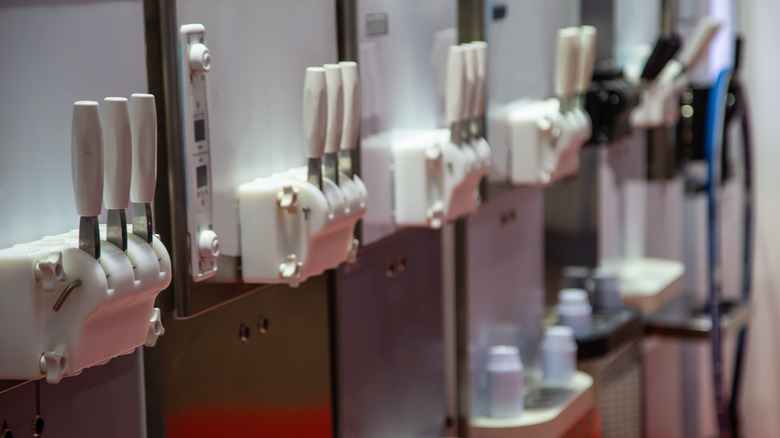Why Those Soft Serve Ice Cream Machines Aren't As Clean As You Think
There's no better pairing than a handful of salty french fries followed by a helping of creamy soft serve ice cream. Soft serve ice cream is dispensed out of a machine rather than scooped out of a tub like you would see in an ice cream parlor. This raises the question, are soft-serve ice cream machines sanitary?
To ensure the health and safety of consumers, the Food and Drug Administration (FDA) routinely updates its regulations around food preparation within the food service industry. This helps restaurant staff, food stores, and food vendors alike meet the criteria for safe food distribution through policies designed to reduce the risk of illness from food contaminated with harmful germs or bacteria.
Jason Liu, owner of the Soft Swerve ice cream shop in New York City, told Inside Edition, "The cleaner the machine is, the better the ice cream actually comes out." Knowing that taste and flow are dependent on the machine's cleanliness, Inside Edition reporters set out to inspect 40 different ice cream serving locations in Seattle to measure just how clean their soft serve machines really were.
Soft serve ice cream machines can contain harmful bacteria
In one restaurant, Inside Edition correspondent Lisa Guerrero found the restaurant's ice cream dessert contained 28 million different types of bacteria. Over the years, fast food chain Mcdonald's has also come under fire for illness related to the cleanliness — or lack thereof — of their soft serve machines. In 2004, over 100 people in the town of Piqua, Ohio became severely ill after consuming ice cream served at a local McDonald's whose soft serve machine was found to contain traces of staphylococcus, the bacteria responsible for staph infections, according to NBC News.
Though these stories are enough to make us want to swear off ice cream altogether, the good news is that not every soft serve machine is contaminated. Inside Edition concluded their investigation to find that the ice cream in 31 out of the 40 locations inspected were free of harmful contaminants, indicating proper cleaning of their machinery.
According to Food Quality & Safety, proper cleaning requires disassembly of the appliance. The refrigerated tanks inside the machine, known as hoppers, also require particular attention. Warm water should be run through these chambers repeatedly and a small brush should be used to remove remaining residue from hard-to-reach areas. Afterward, a sanitizer should be utilized to help keep the machine bacteria-free and functioning properly.

